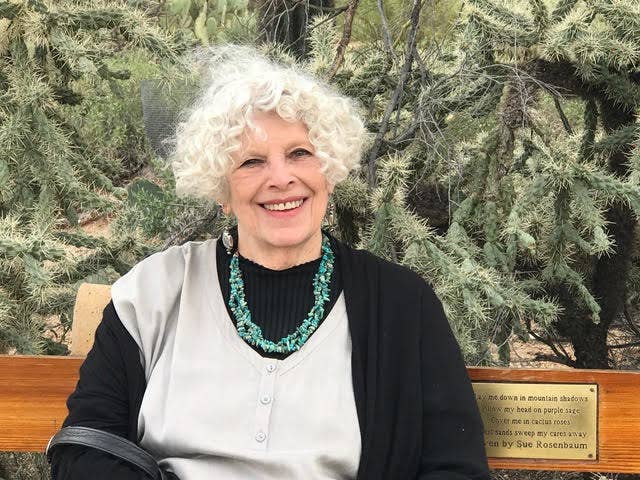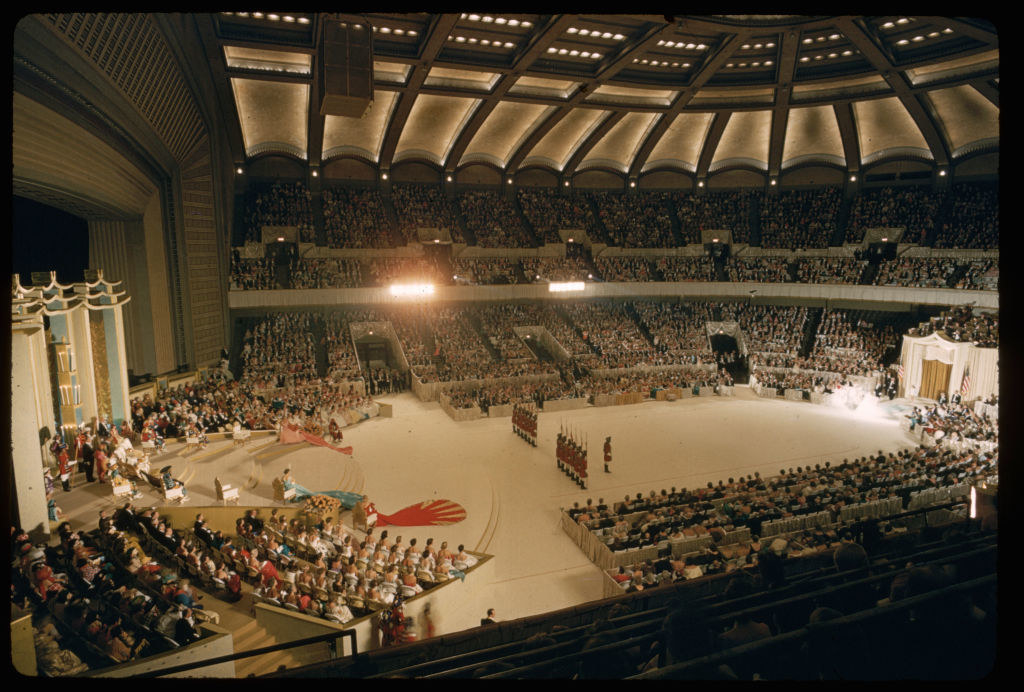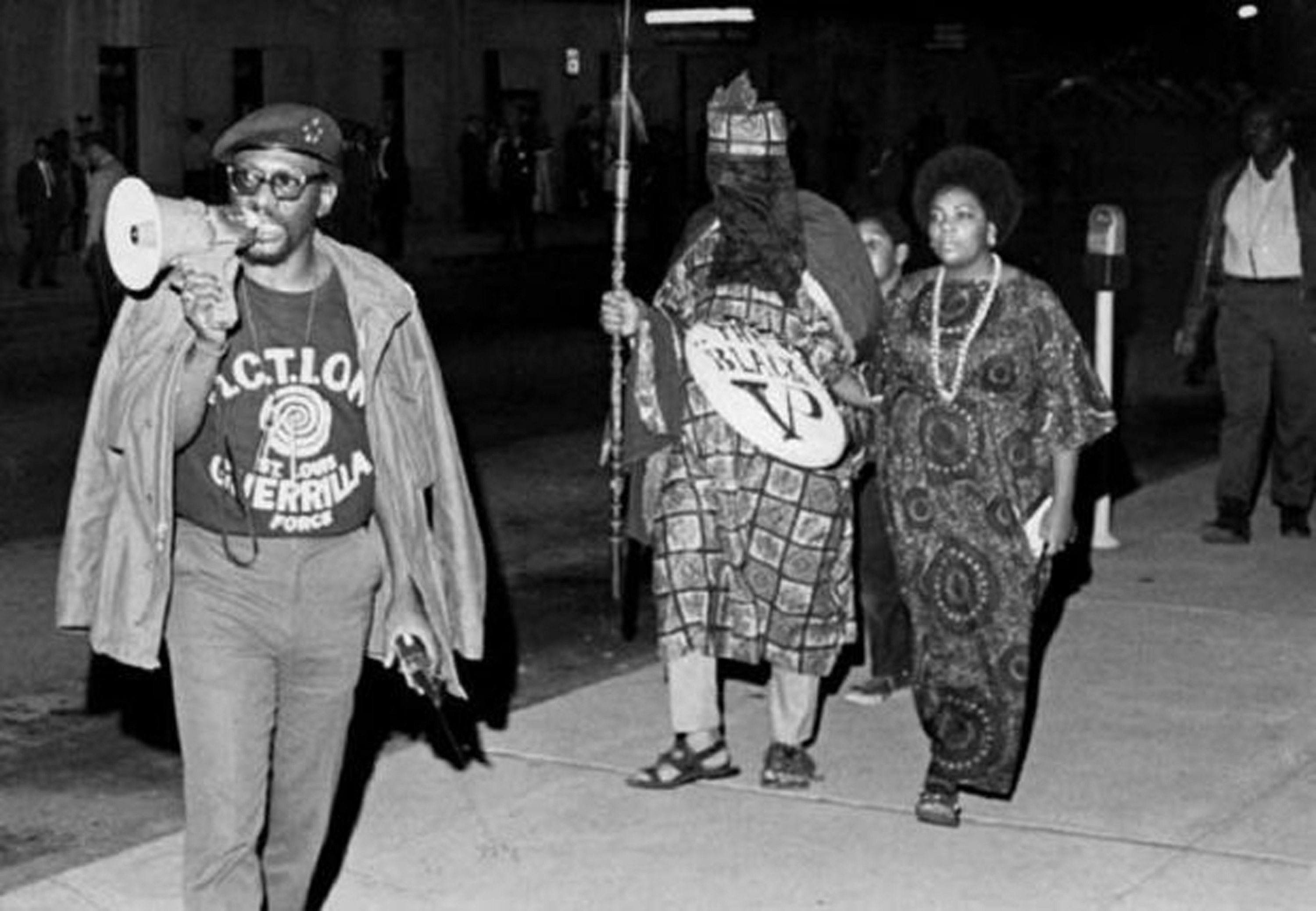
A day after the Veiled Prophet Ball crowned a Queen of Love and Beauty on Dec. 23, 1972, the front page of the St. Louis Post-Dispatch did not entirely focus, like it usually did, on the new queen herself.
Instead, Jane Sauer and Gena Scott made headlines as the two activists from the Action Council to Improve Opportunities for Negroes (ACTION) who had infiltrated the exclusive ball in St. Louis and managed to unmask the mysterious Veiled Prophet as a top Monsanto executive.
"New Rope Trick Unveils Prophet," the Post-Dispatch's headline stated, describing how Sauer dropped dozens of leaflets — calling out the racism of the Veiled Prophet organization — onto the attendees to distract them as Scott slid down a power cable in her evening gown to yank the elaborate veil and crown off the prophet onstage. Sauer and Scott, both white women, were arrested and spent the night in jail.
Sauer, who is now an 83-year-old artist, told BuzzFeed News Wednesday that their headline-grabbing protest prompted St. Louis residents to begin questioning the powerful, secretive, and private organization of the area's wealthiest white elites that was endorsed by the city, and which had long excluded Black and Jewish people.

Today, the organization — which began allowing people of color to join in 1979 — "rejects racism" and touts its "civil progress, economic contributions and charitable causes in St. Louis," it said in a statement.
But Sauer said the Veiled Prophet continues to be a group where the "elites of St. Louis get together to celebrate themselves."
"They do some charitable things to look better ... but they have done nothing as an organization to address systemic racism," Sauer said. "They are still the power seat of the city."
Which is why, Sauer said, she would love to hear from actor Ellie Kemper about her participation in the Veiled Prophet organization 20 years ago.
Kemper, who comes from a wealthy and well-connected family in St. Louis, became a trending Twitter topic over Memorial Day weekend when users resurfaced photos of her being crowned the Queen of Love and Beauty at the 1999 Veiled Prophet Ball.

While some Twitter users falsely branded her a "KKK princess" and demanded an explanation, many others felt she should not have to answer for a 20-year-old event put on by an organization that had moved on from its racist past. Kemper's representatives did not return requests for comment, and she has not addressed the issue on social media.
Sauer, who, along with other ACTION activists, protested and picketed the Veiled Prophet ball and parade through the 1970s, said she would have liked Kemper to address the controversy.
"I don't think she's entirely to blame. I definitely don't. But I would personally love for her to make a statement and would love to know what was in her head at the time," Sauer said.
Many people online who derided the coverage of Kemper's past as so-called cancel culture were also inclined to downplay the Veiled Prophet's racist and elitist origins.
"Like many things in America, that event has some ugly racism in its history, well before Kemper was involved," the National Review, a conservative magazine, wrote in an article urging people to "leave Kimmy alone."
But Sauer — who continues her political activism through her art — said this is a time when people are revisiting the country's past to learn from their mistakes and accept responsibility for them.
She brought up how people are only now starting to talk about, and pay attention to, the 1921 Tulsa massacre, despite the fact that those who committed the crimes aren't alive today.
"We're turning over those stones and we're looking underneath them to understand what happened and we're hopefully trying to learn from our history," she said.
Sauer said Kemper came from a very privileged and wealthy family like those who belonged to the Veiled Prophet organization. Being crowned the Queen of Love and Beauty at the ball was a "rite of passage" for girls belonging to St. Louis families like Kemper's, Sauer added.
While Sauer said she does not believe Kemper was entirely blameless by participating in the Veiled Prophet Ball, given that its racist history had been widely written about by then and the changes to the organization were merely "cosmetic," she acknowledged that Kemper was a "product of the environment" she grew up in.
Being presented at the ball as a young woman was like looking forward to your 16th birthday for girls who belonged to the rich white families of St. Louis, Sauer said.
"She probably just accepted that as part of her life," she said.
Before she became involved in civil rights activism, Sauer thought the Veiled Prophet ball and parade were simply an "attraction" for the residents of St. Louis at a time when there weren't many community activities and events.
It was only when she joined ACTION — founded by one of St. Louis's most prominent civil rights activists, Percy Green II — that she learned of the organization's discriminatory and elitist practices and the economic impact it had on the city.
ACTION had been protesting against the major companies over their refusal to hire Black men. But when activists realized that many of the Veiled Prophet members were also the heads of major banks and corporations, they began picketing the Veiled Prophet events as a form of protest.
"The people who ran the Veiled Prophet were really the power structure of the city of St. Louis. They were the people who had the jobs to offer," Sauer said. "The racism of Veiled Prophet organization became clear when you look at what they did and who they employed in their companies."
The private group also had the city's support, Sauer said. The ball was held at a city-owned auditorium until the mid-'70s and the event always had a heavy police presence, all at the city's expense, she said.
Although ACTION had picketed the ball outside the venue for years, most famously parading a Black Veiled Prophet and his Black Queen, the group had never managed to infiltrate it until that December in 1972.

Sauer said she and Scott were given tickets to the ball by members of Veiled Prophet sympathetic to ACTION's cause. They entered the event dressed in their finest gowns and wondered how best to disrupt the event, she recalled. They had decided on just throwing anti–Veiled Prophet leaflets into the crowd, when Scott saw a power cable hanging from the balcony to the stage where the Veiled Prophet stood, Sauer said.
"[Scott] asked, 'Which one of us wants to go down the cable?'" Sauer said with a laugh. "She was younger and athletic and I was not, so I said, 'You go down the cable.'"
Sauer then used the leaflets to distract the attendees on the main floor below while Scott slid down from the cable, which snapped just as she was landing, causing her to break a few ribs, Sauer said. But Scott managed to yank off the Veiled Prophet's veil for a few seconds before he rushed to put it back on. The police arrested both Scott and Sauer and escorted them off the scene. The Veiled Prophet did not press charges against them.
The disruption took place only 40 minutes prior to the new queen being crowned, the Post-Dispatch wrote at the time.
"Although the incident temporarily shocked the guests, they soon rallied and greeted the Queen with the traditional enthusiasm of the occasion," the article added.
